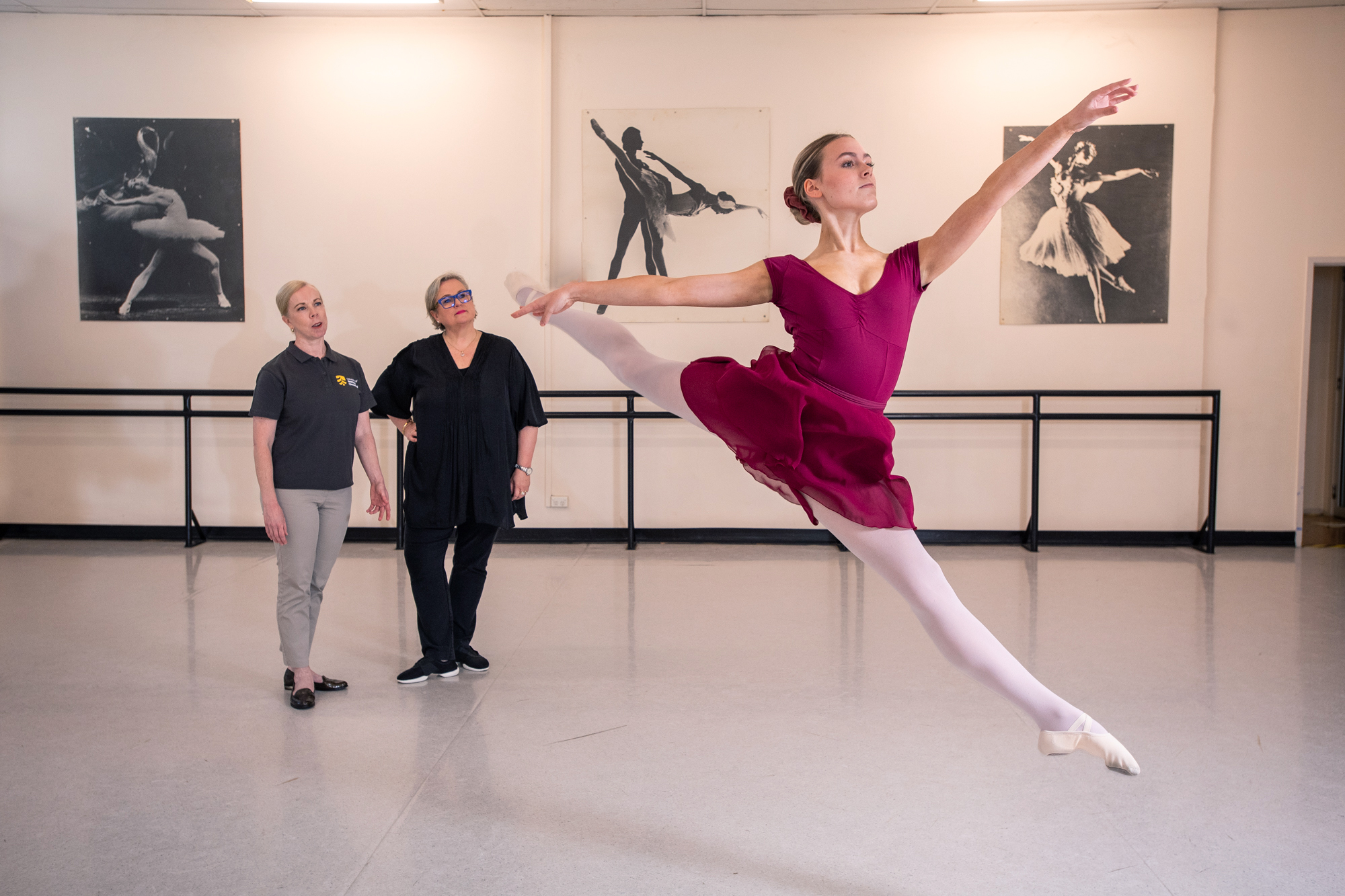New research is tackling the health literacy of Australian dancers in a bid to lessen the soaring rates of career-altering injury. While dance remains one of the most popular recreational sports for young people in Australia, participation declines steadily with age, and dance injury is often to blame.
Injury and health are key concerns for the dance sector, especially as many dancers stretch themselves across various styles that challenge their original training. Professor Emma Redding, Director of the Victorian College of the Arts (VCA), has called for dancers to be seen more as artist-athletes.
‘Two national studies in the UK showed that up to 83% of dancers are injured in any 12 months,’ Redding explains.
University of Southern Queensland’s (UniSQ) Dr Melanie Fuller, a musculoskeletal physiotherapist and researcher investigating injury reduction in dance, is leading research to learn what health information those in the dance community require and how they want to receive it.
The new research, headed by Fuller, deliberately targets dancers outside the professional sector. The survey, run by the University of New South Wales (UNSW), invites non-professional and recreational dancers of all forms, parents and guardians of dancers under 18, and dance teachers to participate.
‘We hope to understand the best way to provide education to improve health literacy in the dance community at a grassroots level to promote a lifetime of dance participation for physical activity, optimisation of health and performance, and reduction of injuries,’ says Fuller.
Examination of early and recreational training could influence training for future dancers.
The cost of dance injury
Nadine Sayers, Principal at Sayers Dance Centre in Kenmore, Brisbane, says that rates of injury in young dancers are at an all-time high.
‘In my 40 years of teaching,’ says Sayers, ‘injury is definitely more common now than ever before. Personally, I feel the nutrition is lacking. Bone density and muscles aren’t as strong. That leads to fatigue, and fatigue leads to injuries.’
For many, these injuries halt a career in dance before it has begun. This is possibly true for young dancers like Elana Griffiths, who took nine months off from training due to a stress fracture in her spine. ‘That’s put me more than a year behind of where I feel like I could have been,’ she says. ‘My injuries over the years have forced me to rethink my future career in dance.’
Sayers says it’s ‘heartbreaking’ to watch hard-working students suffer and take substantial breaks from training. Recovery takes a great deal of resilience and determination. Fortunately, Griffiths has that in spades. ‘I like to prove people wrong,’ she says, ‘and I have.’
A link between dance injury and training
The new research has evolved as part of a working group from the Dance Research Collaborative that focuses on dance-related research in health, education, performance, injury and epidemiology.
While injury and health services are an accepted part of career development for professional companies, the group has identified a lack of essential services at the pre-professional level.
‘Access to high-quality dance-specific health services can be limited [at that stage],’ says Fuller. ‘Improving knowledge in dance health may assist with injury management and better recognition of psychological concerns in the dance community.’
This is in line with previous findings from VCA’s Emma Redding. Music and dance training are often handed down through generations, which means ‘the way in which dancers are taught is based primarily on anecdotal evidence, teacher wisdom and experience,’ says Redding.
Accordingly, the new survey targets pre-professional dancers, their parents and teachers to garner information on overall health literacy and health services. Fuller is clear that a holistic approach to health is required, including the consideration of dancers’ mental health.
Dance injury and mental health
Studies on the mental health of dancers are growing. A 2021 study found that more than half of dancers identify struggling with mental health, but more research is required. There are links between dance injuries and rates of depression and anxiety. Eating disorders are also higher among professional dancers than in the general population.
However, a 2023 review of contemporary studies found significant research gaps. The review found a lack of applied interventions in preventing mental health issues. Mid-career dancers are also under-represented in research, while research into classical ballet is over-represented. ‘Different dance styles and freelance employment are in dire need of in-depth investigation,’ researchers Michelle Schachtler Dwarika and Heidi Marian Haraldsen stated in their review.
For young dancers like Griffiths, dancing is a vital part of their identity. ‘It’s why I get up in the morning,’ she says. Her injuries have been tough ‘emotionally, mentally and physically,’ she adds. ‘But there’s no other place I’d rather be than in the studio.’
Like many dancers, Griffiths doesn’t see the art form as inherently damaging to her mental health. One of the main reasons she returns to the studio is its positive effect on her physical and mental well-being.
It’s clear to anyone inside the industry that there is a sophisticated relationship between dancers’ mental health, training and overall health literacy and access to services. This latest survey will contribute to the growing knowledge around that relationship.
‘The dance community is very passionate,’ Fuller concludes. ‘This team of researchers love this art form and are motivated to provide high-quality health information to keep dancers healthy and dancing at their best for longer.’
